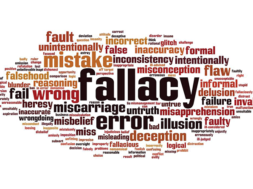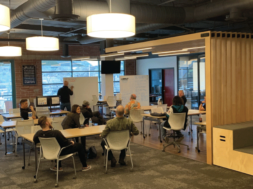
Developing and Managing a Personal Brand
Jeff Bockelman, CEO & Founder, CareerScribe and Pedagog
Trends in professional employment
The economy is growing, unemployment is falling, and companies are finally hiring again, so this is the perfect time for your students to be evaluating the value of their professional asset and the habits they have – or don’t have, but they need to be prepared to promote themselves.
Every day we are becoming more of a global free agent labor economy, and talented individuals are no longer just “employees” – they are consultants, experts, and thought leaders.
Your students will live and die by their personal brand in this type of market.
The average worker changes jobs more frequently than ever, and your students should always consider themselves on the market like any valuable product. Engaging in their professional story, online presence and resume in a way that embraces this reality. Recruiters and employers are now frequently using LinkedIn and Google to search information before they interview and hire a potential employee. Prepare your students for that search and use it to their advantage instead of disadvantage.
In the past several years, universities and educational institutions have begun adopting tools and assessing programs to teach students the importance of personal branding, but most of these programs are still voluntary. Traditional educational courses are still limited, so this behavioral shift with the marketing and sales strategies of how they “go to work” will remain slow until the education becomes required, or your students finally realize they are responsible for managing their own careers, because there are no guarantees any longer when it comes to the stability of their job.
These are the facts about the existing global employment market and trends for the future. Remaining passive and not beginning to develop better habits that embrace this reality will put them behind, and lead to inconsistency in employment.
Personal Branding Life Cycle
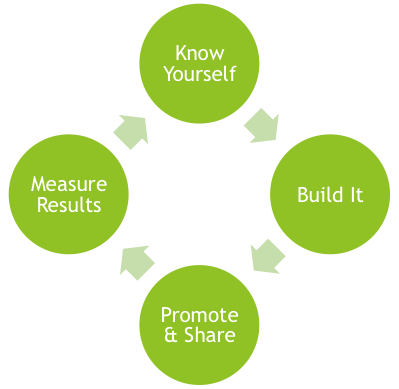
Know yourself
Developing a healthy and successful marketing and sales strategy for a student’s career all begins with having an idea of who they are? For companies developing a product involves establishing a mission statement, understanding what raw materials are available, and understanding the costs associated with building the product. For a student, this can be a simple or much more complicated question. Utilizing personality, skills or career assessment tools aren’t a bad idea, but should only be used if they already have a basic strategy in place. They can often make things more confusing or paralyzing than providing clarity.
Knowing yourself can be as simple as understanding things like:
- What are my hard skills?
- What are my soft skills?
- How much am I willing to travel?
- How far can I commute?
- What kind of work/life balance do I require?
- What type of work culture do I prefer?
- What type of compensation do I need?
- Are there industries I wouldn’t consider or would prefer?
Build it
Now it’s time for them to put it all together with a consistent story. If they have a good grasp of their raw materials, and the things that are important to building and promoting their product, they will be in good shape for this phase. Like most things associated with personal branding, the most important thing is that they do something. Once they have a basic understanding of themselves, they can start with the basic tools to build a product that represents who they are, and what they have to offer.
Traditionally, the basic tool is a resume. A resume is still necessary and will be for some time, although the value of a resume has decreased gradually over the past 10 years, and will continue to do so as additional forms of employment and career data are available. The best format to be using right now with a resume is one that tells their story simply, accurately and transparently. A resume shouldn’t be used to try and tell the whole story, and it should be remembered that the goal of a resume is to get the reader or potential customer to say, “I want to learn more.” No different from a marketing advertisement for a product compels a potential buyer to do the same.
Because of the advances in technology, the Internet, LinkedIn, etc., digital information has never been more available, and will continue to proliferate. Your students must keep this in mind and take a proactive role in making sure the information that surfaces is accurate and consistent across different platforms. The best way to do that is to produce data and content that is accurate and updated regularly. Students should make sure they have a complete and accurate profile on LinkedIn, and should consider developing an ePortfolio as well. What they’ve learned about themselves in the first phase of personal branding should be published consistently across these different platforms.
Additional forms of documentation and proof students should consider when building their professional product include:
- Documentation and proof of achievements
- Performance reviews
- References
- Professional photo
- Video introduction
- Verification of employment and education
- Felony and credit checks
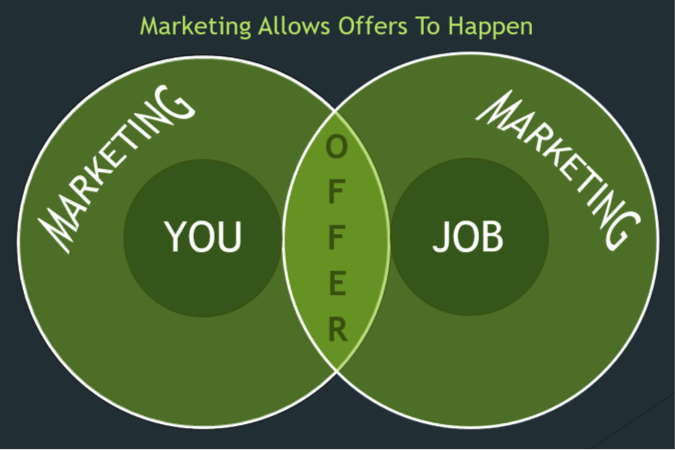
Promote and share
The sharing step of personal branding is the greatest opportunity for anyone actively in the employment market at this time. Even the best are only doing the bare minimum because the education and habits of personal branding are only now being developed. This creates a significant opportunity for your students if they’re thinking like a marketer. More resources and tools exist right now to target their audience of potential buyers/employers than ever before.
LinkedIn is the most obvious, and if a student doesn’t have a basic, up to date presence on LinkedIn, they are already in the bottom 25 percent of their peer group from a competitive standpoint. Any entrepreneur or business owner can tell you how much of their product they’ll sell if no one can find it or it’s difficult to find, or if the value proposition is confusing.
It may sound complicated when you consider applying traditional marketing concepts such as demographics, target marketing and sales plans, but it doesn’t have to be so overwhelming. Right now, your students can simply categorize their professional contacts into 3 buckets – hot, warm and cold.
Hot contacts
Those people they know well and would be surprised if they didn’t return a call or email when they ask for help. They’d likely get a 75-100 percent response rate from this group for a properly worded message.
Warm contacts
Likely all the rest of their contacts on LinkedIn, or those they’ve worked with but only casually know. If they send them a message, they wouldn’t be shocked or offended if they don’t respond. They’d likely expect a 25-50 percent response rate from this group for a properly worded message.
Cold contacts
This is everyone else they’re not connected with, and it’s unlikely they’ll know who they are. This is an enormous category – likely millions, and includes anyone they can identify through thoughtful searches on LinkedIn, asking others for leads, reviewing a company’s directory of employees from their website, etc. They’d likely only expect a response rate of 5-20 percent from this group with a well thought out, non-intrusive message.
As your students begin exposing all of these groups to their product or brand, the key will be their message or strategy, but therein lies the opportunity – and dare say fun! Your students should be creative, keep it simple, and remember the best approach to exposing someone to their story, especially in the cold category, isn’t likely: “Hi, I’m actively looking for a job, do you have anything?” Instead, your student should think about: “Hi Sue. From time to time I try to make an effort to connect with other professionals that are succeeding in their careers. I came across your name recently, and your accomplishments caught my attention. If there’s anything I can do to help you, please let me know.” It’s not hard to imagine which of those two approaches is likely to inspire someone to action, which should be the goal of the Promoting and Sharing phase. Once connected, it’s much easier to send a follow-up message asking for help or an introduction to someone else in their company.
Ironically, interviews and job offers take care of themselves if students focus on creating the right activity.
Measure results
In the final phase of personal branding and throughout their career, your students should be evaluating what the market … their customers are telling them. Remembering, that what they might be telling them verbally in the way of feedback after interviews, or possibility why they didn’t even get an interview, is often not the entire story, and unfortunately is often not even the truth. Companies in particular are very concerned about the legal exposure they have regarding their hiring practices, so unfortunately they are very cautious with providing the kind of detailed feedback that could be extremely valuable from a marketing research standpoint. So students need to be cautious when using interview feedback.
Responses like, too little education, not the right experience, or a decision to go a different direction with the position are often given. Instead, the real reason is often as simple as they just didn’t connect with the person, and the “reason” they didn’t connect were the soft skills such as communication (speaking and listening), professionalism (show up on time, dress appropriately) and presentation (could they articulate their experience in an intelligent, succinct way). It’s often not the actual hard skills themselves as to why an offer isn’t extended.
Some other forms of marketing data and feedback for students to measure success include the following:
- LinkedIn invitations and message results
- Number of connections on social networks
- Response rate and information from phone calls or emails to hot, warm and cold contacts
- Market data regarding your professional peer group or competition
Unfortunately, not many tools are offering optimization metrics yet, but some have been offering, “Who viewed my profile” type of data. It won’t be long before your students are able to learn more about the actions their audience is taking such as: What percentage clicked on their photo, what percentage viewed their resume and which sections, what percentage clicked on items in their portfolio and which ones. Additionally, they will get demographical data about that activity such as: what type of professionals are viewing their information, where do they live, what type of a company do they work for, etc. Until your students have developed even the basic habits and behaviors associated with a successful marketing and sales strategy for their career, more detailed demographical data really isn’t relevant, albeit interesting.
Summary
We have entered a global free agency employment market, and virtually everything that can be sold, shared or presented has swiftly become digital and portable: music, books, health care, education, advertising, etc. The fact is, every economic activity is being transformed in this Digital Age, so it stands to reason the world of employment is evolving as well.
What’s made this more painful than other significant, personal behavioral shifts such as dieting and exercise, is that it’s happened rapidly within one generation – likely just over the past 20 years. Healthy behaviors such as dieting and exercise have been developed over the past 100 years, and now include thousands of training and educational programs, and billions of dollars in spending.
Developing similar healthy behaviors regarding professional marketing and sales strategies continues to gain momentum. A significant advantage now exists for your students if they can learn how to recognize, build and promote their personal brand.
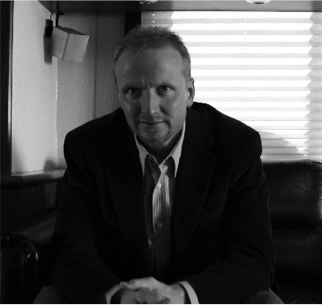
JEFF BOCKELMAN has over 25 years of business experience, with 18 years in the employment industry as an entrepreneur and executive recruiter. He began his career with Deloitte & Touche as a CPA, and worked in corporate finance for several large business headquarters in the Midwest before becoming a top national recruiter and trainer in 1997. Jeff went on to create the staffing firms Springer Danz and Bockelman LLC, Temporary Avenue LLC and That’s Good HR, Inc. Over a 9 year period and growth to over $10 million in revenue, That’s Good HR became the recipient of numerous regional growth awards, and nationally as an Inc. 500 company. After selling his business at its peak, he launched CareerScribe, and eventually Pedagog to facilitate change in the career behavior of millions.
Contact Information: Jeff Bockelman // CEO & Founder // CareerScribe and Pedagog // 317-910-2128 // jeff@careerscribe.com





